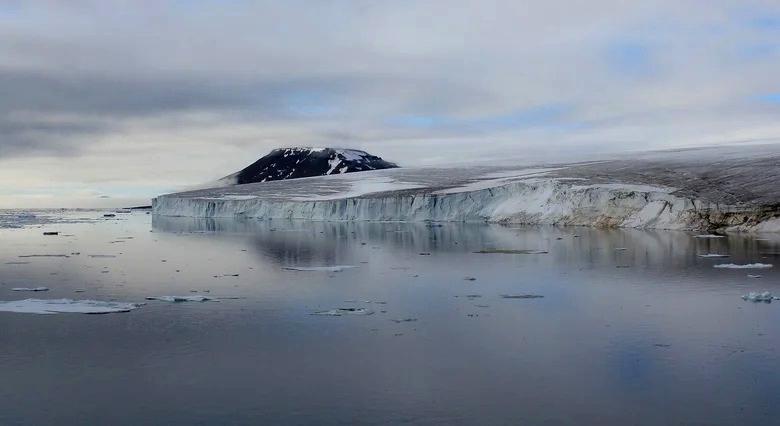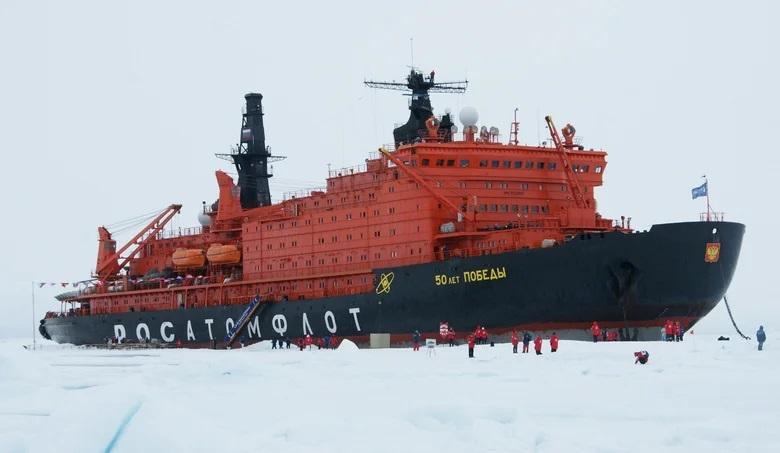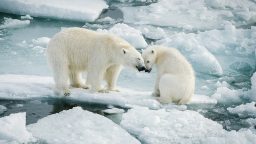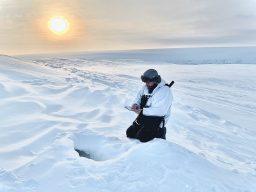
Franz Josef Land. Photo: Wikimedia / Dmitrijshh / CC BY-SA 4.0
The Arctic: the beginning of development
The history of Arctic exploration is a series of long—term campaigns and great discoveries. The chronicles mention that Russian navigators tried to reach the coast of the Arctic Ocean back in the XI century. In the following centuries, Novgorodians, nicknamed “Pomors”, settled on the shores of the White Sea. The Orthodox began to build monasteries.
Cities have been built since the XV century. Among them are the seaports of Arkhangelsk and the legendary Siberian Mangazeya. The Russian Cossacks moved even further east and discovered Chukotka. And their chieftain Semyon Dezhnev discovered the strait between Eurasia and the North America. During the Great During the Northern Expedition, fleet officer Vitus Bering, together with Semyon Chelyuskin and the Laptev brothers, mapped almost the entire Russian coast of the Arctic Ocean.
In the XIX — early XX century, expansion into the Arctic continued with renewed vigor. In 1894, a plan for the development of the Far North was developed, according to which, for example, local settlers were exempt from military service and taxes. By this time, other countries began to show serious interest in the northern territories.
Nevertheless, in 1901 it was the Russians who landed on the Franz Josef Land archipelago on the first domestic icebreaker Ermak. In 1926, all the Arctic islands adjacent to the land borders of the USSR that existed at that time officially became part of our state.
With the beginning of exploration beyond the Arctic Circle, it became clear how rich the Arctic coast is in minerals. In 1931, the first industrial oil and gas field in the Russian North was discovered — Chibyusskoye. However, further development of the region and the development of new deposits really resumed only after the end of the Great The Patriotic War.
From the 1960s to the 1970s, the largest oil and gas fields were explored here: Urengoyskoye, Yamburgskoye and Bovanenkovskoye. By the end of the 1980s, the Soviet The Union has become a world leader in the exploration and development of the Arctic.
In the 21st century, Russia has continued to develop this region. Today, about 60% of oil and 80% of gas from their total production in our country are extracted here. Large reserves of gold, tin, mercury, tungsten, chromium and many other minerals are concentrated in the Arctic.
North Sea Route: through the Arctic to Asia and America

Nuclear icebreaker “50 years of VICTORY”
Today, world trade and the delivery of goods from different continents is carried out mainly along a rather complicated route through the Suez Canal. In addition to the long distance, this route has another disadvantage — the slightest problems with navigation in narrow sections immediately affect the global economy. In the spring of 2021, a container ship crashed here, blocked the entire waterway for almost a week and blocked the wiring of ships. While the problem was being solved, transportation prices quickly jumped, which also affected the cost of goods.
The Arctic region through which the so-called The Northern Sea Route (NSR) is a very promising alternative for trade between countries located in different parts of the world. In particular, between Europe and Asia. The Northern Sea Route is 2 times shorter than the route with the Suez Canal in length.
This means that goods can be delivered faster and it is more profitable from an economic point of view. The NSR gives you the opportunity to choose, which is always better than the lack of alternatives. If in Soviet times our country needed nuclear icebreakers mainly for scientific expeditions, now they also provide almost year-round navigation along the NSR.
The very process of building nuclear icebreakers is long and high—tech. The only country with a fleet of this type was the USSR, and Russia became its legal successor. The basis of our icebreaking facilities are the ships of the Arctic class with a capacity of 55 megawatts. Two more Soviet nuclear—powered ships — Yamal and 50 Years of Victory – still run along the Northern Sea Route.
The most powerful in the nuclear flotilla is the lead ship “Arctic”. This is a new generation ship of the LK-60YA class. He is more powerful than his fellows. Another working ship of the same series is the icebreaker Siberia. In November 2022, the Russian tricolor was raised on the new Ural nuclear-powered vessel and it has already started work. At the same time, another similar icebreaker, Yakutia, was launched. In the coming years, our fleet should be replenished with new giants “Chukotka” and “Russia”.
In 2022, the Russian government transferred the management function of the Northern Sea Route to Rosatom, taking into account the existing experience and the role of nuclear scientists in the development of the region. The Corporation has already started regulating shipping on the NSR. And as part of the development of the Northern Sea Route until 2035, Rosatom will also participate in the construction of new ships, improve the maintenance of seaports and ensure the safety of navigation in order to make this trade route the most efficient and attractive.
In addition, Rosatom intends to participate in the development of large deposits of rare minerals in the Arctic. Among them, for example, the Pavlovsky deposit of lead-zinc ores in the Novaya Zemlya archipelago and the Kuchus gold deposit in Yakutia, where, in particular, the corporation is implementing a project to build a low-power onshore nuclear power plant for its energy supply.
The Arctic: the territory of development and success

Floating nuclear thermal power plant. Source: Rosatom
The main difficulty in the development of the Arctic is associated with harsh climatic conditions. Therefore, the cost of fuel, materials, people’s work and other expenses are expensive and have a strong impact on economic activity. But the region has enormous industrial potential.
It can be said that after a pause associated with the collapse of the USSR and the economic difficulties of the 90s of the last century, Russia returned to the Arctic as a real hostess. Oil and gas facilities, main pipelines, power plants, mines, railways, airfields and ports are being built here, which means that jobs and infrastructure for a comfortable life for people are being created.
Rosatom helps to provide electrification and heat supply to hard-to-reach areas of the Far North. Our scientists and specialists have created floating nuclear thermal power plants (NPP). The world’s first vessel of this class is the Akademik Lomonosov.
The capacity of this NPP is 70 MW, and the service life is from 35 to 40 years. The energy it produces is enough to provide heat and electricity to a city of about 100,000 people. Rosatom has already begun construction of new floating nuclear power plants with more productive RITM-200 reactors for the power supply of the Baim Mining and Processing Plant.
But that’s not all. Rosatom wants to create a single digital resource using artificial intelligence technologies in the Arctic zone. It has the working title “Smart Arctic”. It is planned to combine all available information resources, starting with the study of the weather and ice conditions, and ending with production issues, into a single portal. In order to facilitate the work and life in the conditions of the Far North of geologists, oilmen, gas workers, sailors and other specialists.
Given that the climate on our planet is getting warmer, and people working in the Arctic are provided with everything they need, this region is becoming not the edge of the earth at all, but the center of attraction for talented and purposeful people.
Anastasia Makarova


